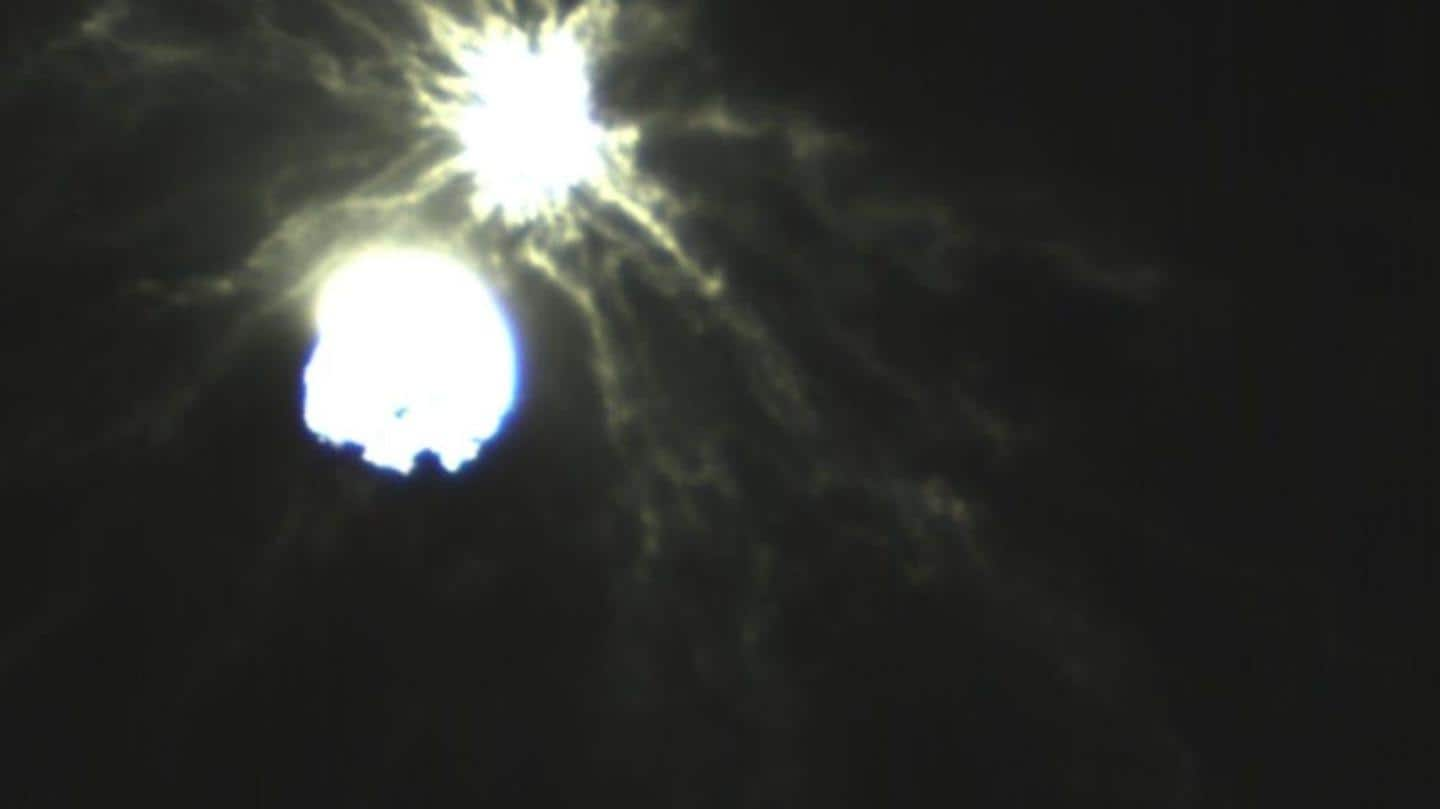
LICIACube delivers first images of DART's wild asteroid crash
What's the story
NASA's DART mission was destined to die from the moment it was envisaged. On September 26 (September 27 for some), it met its fate after crashing into an asteroid.
Fifteen days before its certain death, the spacecraft deployed a small satellite named LICIACube (Light Italian Cubesat for Imaging of Asteroid) to capture its last moments.
Now, we have the first of those images.
Context
Why does this story matter?
Humanity's first-ever planetary defense mission has come to an end. Now, we are all awaiting the answer to the million-dollar question - did DART actually adjust Dimorphos' trajectory?
It will be at least a couple of months before we get an answer to that question. In the meanwhile, we can enjoy the images from DART's unassuming companion - LICIACube.
Timeline
LICIACube was at safe distance during the crash
LICIACube had a bird's-eye view of events that unfolded when the DART probe made its impact with Dimorphos, a small asteroid orbiting another space rock dubbed Didymos.
It kept its distance from the crash site until DART sped into its death at a speed of 23,760km/h.
Three minutes post-crash, the cube satellite clicked pictures of the crash's aftermath with its two cameras.
Images
The satellite captured images of debris around the asteroid
The images captured by LICIACube involve a before-and-after comparison of the Didymos system, the far side of Dimorphos, and photos of bright streams of debris around the asteroid.
When these pictures came in, the satellite's team erupted in cheers. "We're really very proud," said Elisabetta Dotto of Istituto Nazionale di Astrofisica (INAF).
Andrew Cheng, DART's lead investigator, called LICIACube, "our intrepid little reporter."
Twitter Post
Check out these eerie pics from the crash site
Here are the first images taken by #LICIACube of #DARTmission impact on asteroid #Dimorphos.
— LICIACube (@LICIACube) September 27, 2022
Now weeks and months of hard work are now starting for scientists and technicians involved in this mission, so stay tuned because we will have a lot to tell! pic.twitter.com/kVz1WmcsL7
Importance
What is the importance of LICIACube's images?
The images captured by LICIACube are crucial in helping scientists understand the structure and composition of Dimorphos. These images will be investigated with immense precision to understand more about the crash.
Information gathered from the pictures will be important in determining how to tackle a future asteroid problem.
More images from the small satellite are set to follow the first batch.